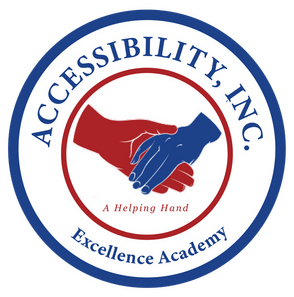Our Programs
The Purpose of Our
CNA Training Program
The purpose of this training program is to provide the student with the knowledge and skills to perform safe client care within the legal and ethical boundaries of the role of a Certified Nursing Assistant (CNA).
To learn more about our mission, programs, costs, or if you have any questions, please contact us. To download a copy of our brochure, click the button below.
Credit Hours
Theory 65 hours |
Lab 20 hours |
Clinical Practicum 40 hours |
Totaling 125 hours
CNA Training will include 125 clock hours broken down into 65 classroom hours, 36 hours of laboratory work, and 40 hours of clinicals. In addition, students will take a 5-hour customer services and job orientation class towards the end of each batch of training. All 65 classroom hours, plus the 36 hours of lab hours and the 5 hours of customer services and job training class will be completed in 4 weeks based on scheduling that will be provided to each student upon registration. Every student will be provided with a copy of the board approved curriculum for their training
Course Description
This course is designed to prepare the student with the knowledge and skills to be able to provide direct care and services to clients throughout their life span under the supervision of a licensed nurse.
Special emphasis is placed on the care of older clients focusing on their physical, social, emotional, spiritual, and cultural needs. This includes developing skills in procedures, communication, and observation, charting and reporting.
The student will be made aware of how State and Federal laws as well as policies and procedures of the institution govern the Certified Nursing Assistant (CNA) professional program.
Course Goals
After learning the Basics of Nursing Care needs and applying this application to their practice, students will adopt a holistic approach to care for the population in which they will be serving.
Course Objectives
Upon completion of this course the CNA nurse aide student will:
1. Have the knowledge to function at an entry level nurse aide position.
2. Define the role of the nurse aide and other members of the interdisciplinary team.
3. List at least three principles of basic nursing practice as presented in class.
4. Perform selected procedures according to identified criteria as presented in class.
5. Measures, record and report vital signs (temperature, pulse, respirations, and blood pressure) accurately.
6. Utilize beginning communication skills to interact with clients/residents, families, and members of the health care team.
7. Measure and record intake and output accurately, observing infection control standards.
8. Demonstrate knowledge of client’s/resident’s rights under the law and the ways in which these rights may be violated.
9. Administer direct client/resident care in a safe and prudent manner.
Course
Expected Outcomes
- Maintain a grade of 80% or higher on all tests.
- Attain a grade of 80% or higher on the final exam.
- Attain a rating of 80% in clinical performance to receive a Pass/Fail for the Clinical Practicum component.
- Maintain 100% attendance in classroom lecture, nursing lab and in clinical.
- Pass the DC NNAAP Exam and obtain your certification.
- Secure gainful employment as a Certified Nursing Assistant. AEA does not guarantee that it’s graduates will secure employment after their graduation.
- Uphold the ethics of the CNA profession.
Student Learning Outcomes
Our program will provide:
- Basic Human Needs: Maslow Hierarchy of needs and promoting the resident’s independence
- Communication: Demonstrate the ability to engage the resident with dignity and respect, how to document and chart on the resident’s condition and other vital information concerning the resident, how to recognize when the president’s health is declining and how to get immediate help
- Infection Control: The use of proper hand hygiene, PPE, isolation precautions and standard precautions
- Basic Safety: Checking to ensure all beds are lock, appropriates side rails are raised, and how to perform the Heimlich Maneuver on a choking conscious resident
- Vital Signs: How to perform vital signs and notify appropriated people when the vital signs are abnormal and how to weight the resident
- Body Mechanics: Demonstrate how to turn and reposition patient, how to prevent pressure ulcer, how to use the transfer belt, how to use the wheelchair, how to ambulate the resident, the proper use of drawsheets, and when to use adults’ briefs (diapers)
- Environment: How to maintain a safe and clean environment
Contact Us
Location: Washington, DC
CNA Training
All Rights Reserved | Accessibility Excellence Academy
